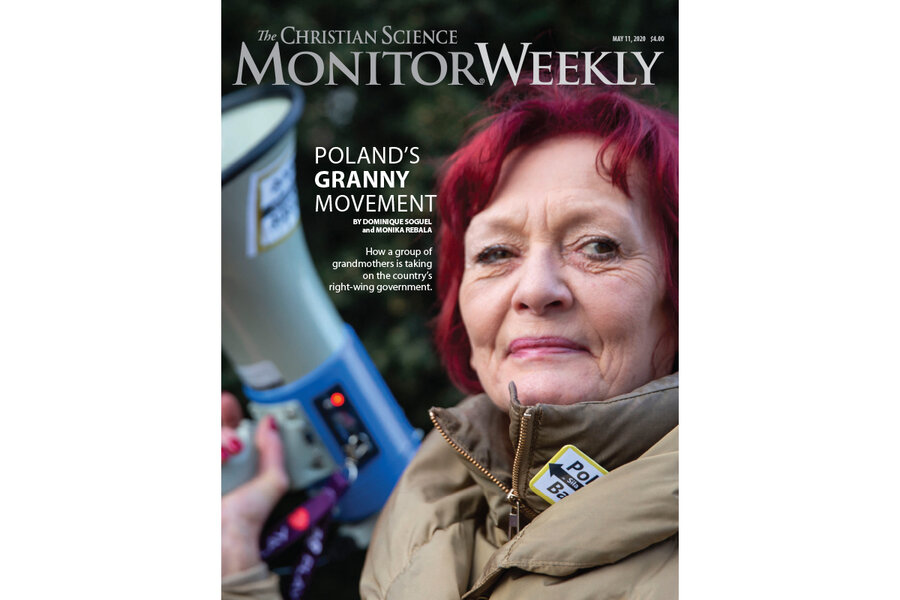Readers write: Ode to snow, a meeting of art and math, and more
Loading...
A meeting of art and math
I was so happy to read “Alexander Calder upended the seriousness of art” in the April 13 Monitor Weekly. Although I am now retired, I taught a class called “humanities geometry” at Morse High School in San Diego for years, and included Calder’s use of math – especially geometry – in his art.
There was a wonderful feature that PBS aired (which I was able to tape, so that will give you an idea of how long ago that was). It had footage of Calder at his parties in Paris, creating a mobile for each of his guests. While he originally went to college for engineering, he realized early in his career that using his engineering skills in combination with his natural creativity opened up new dimensions in art.
My students loved Calder for his fun-loving ways, along with his artistic skills. I loved showing that math has applications in art – a continual focus in my class.
Jeanne Brown
San Diego
Ode to snow
It warmed my heart to read Melissa Mohr’s In a Word column “How ‘snow’ words started a linguistic kerfuffle” in the March 9 Monitor Weekly.
A member of the Inuit people and I would likely differ in our utilization of snow. But all I know is that I love it. I never think of it as harsh. That makes me an outsider among Northeast Ohioans, who prefer to winter in warmer climes.
It also affords me an ample supply of descriptors for snow. There’s freezing rain, wet snow, heavy wet snow, dry snow, snowflakes that simply float to the ground. There’s slushy snow, powder snow, crunchy snow, pellet snow, stinging snow, fluffy snow. Snow can sprinkle, coat, cover, blanket, drift, cling, hug, hush, insulate, accentuate, and brighten the landscape.
My grandma’s favorite was sugar snow. That’s when the sun acts like a broiler, making a creme brulee-like snow crust that may or may not hold the weight of a man or a girl or a dog or a cat or a squirrel or a rabbit or a mouse. My favorite is diamond snow. It appears only at colder temperatures when – in full sunlight or streaks of moonlight –
it gleams and glistens like a blanket of sparkling gems.
There’s snow for snow angels, fox and geese, and backyard skating rinks. There’s the year when 6-foot banks of snow lined the road where my family lived. My dad passed on during that snow season, and the mile-high snow piles in the mall parking lots that survived into June were like an everlasting remembrance for me. Regardless of linguistic constructs, I think the idea of snow is limitless. I wonder which came first – snow, or the love of it? Can one exist without the other?
Deborah Hammerle
Fairview Park, Ohio
Farm writing
Regarding “Only the carrots were predictable” in the March 16 Monitor Weekly: Thank you, thank you for Sue Wunder’s delightful Home Forum essay. It was so very welcome. I live in a large senior retirement manor, and we are currently under lockdown – so reading her piece was truly like a breath of fresh air.
Like Sue, I’m not big on carrots, but the memory of this essay is surely going to help keep a smile on my face during this trying time when the coronavirus is getting center stage. She’s been one of my favorite writers through my many decades as a Monitor reader. She always shares such a special connection with her farm animals. Keep ’em coming, Sue.
Carolyn Hill
Portland, Oregon







